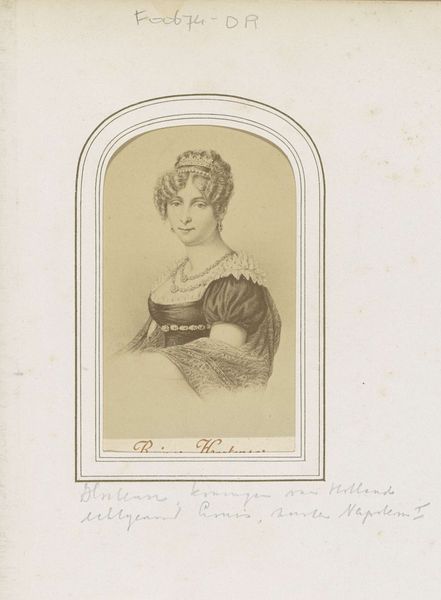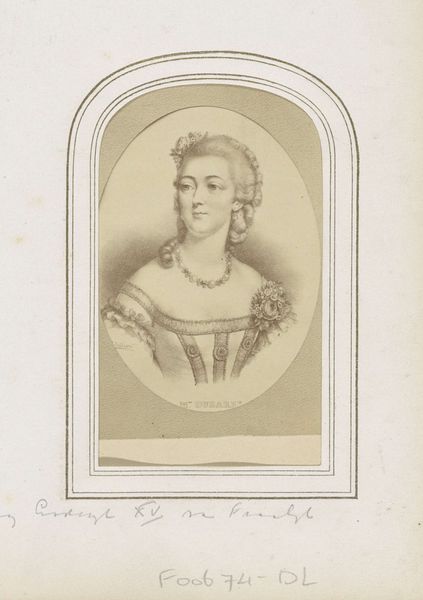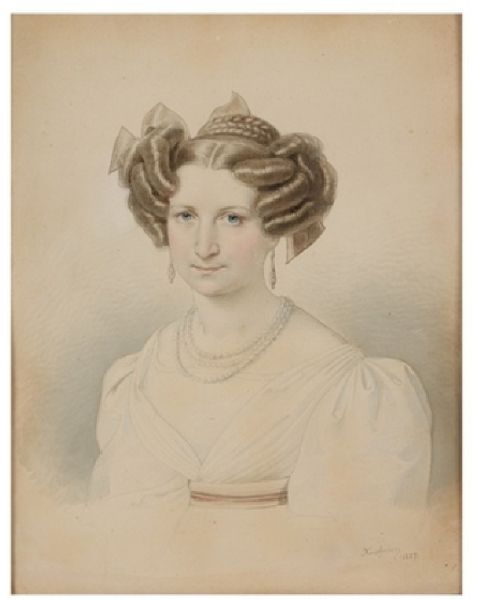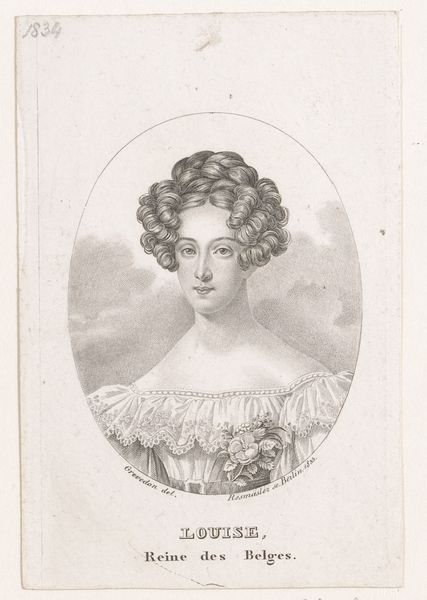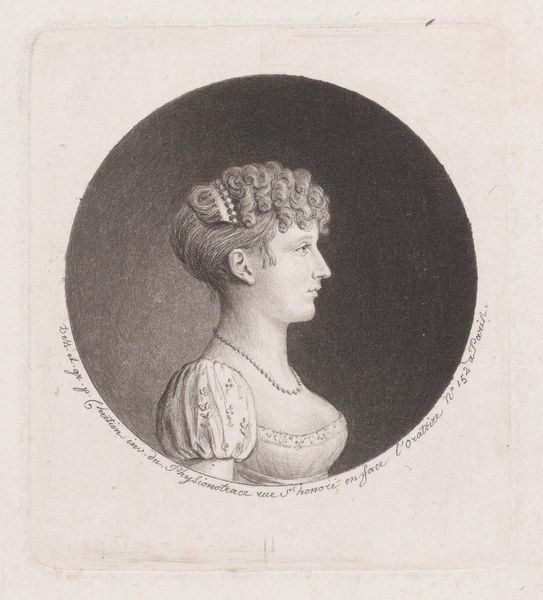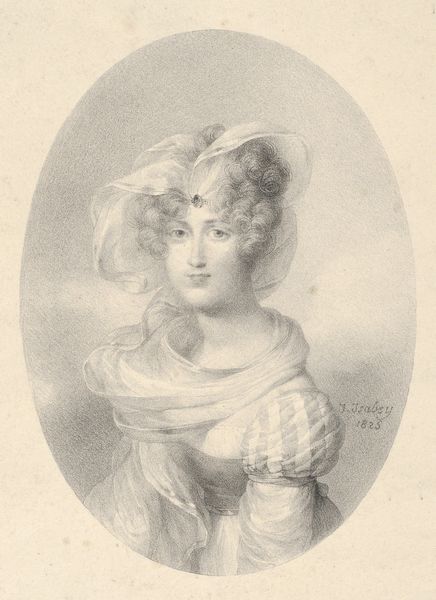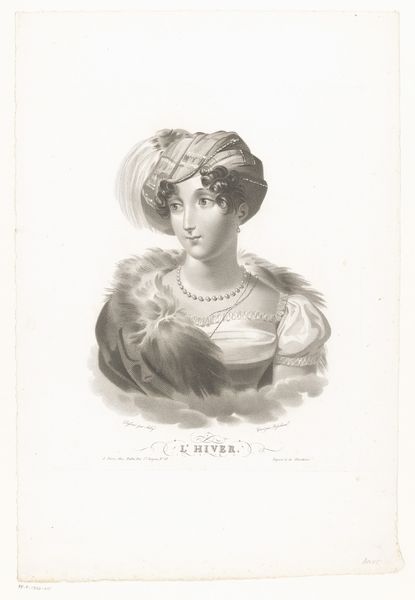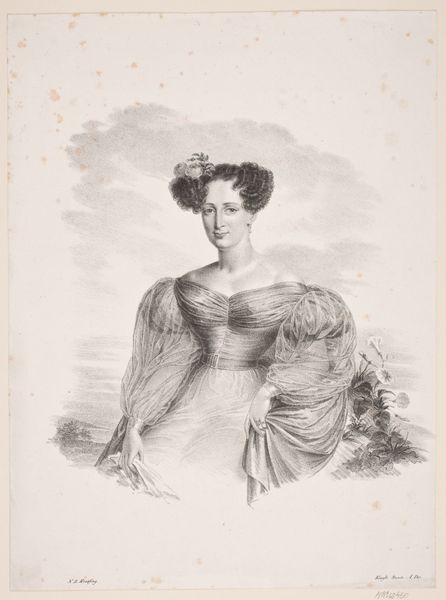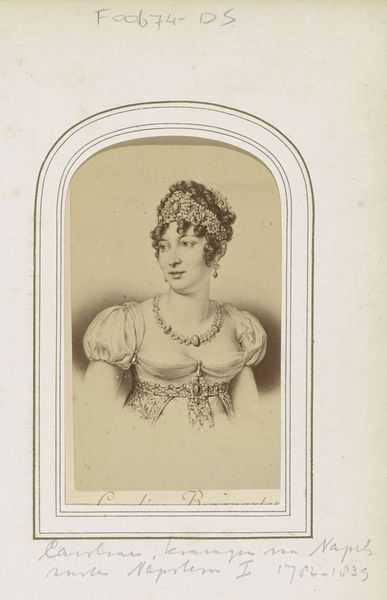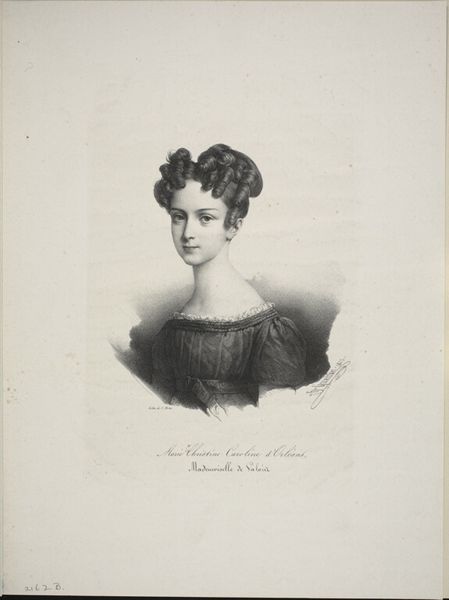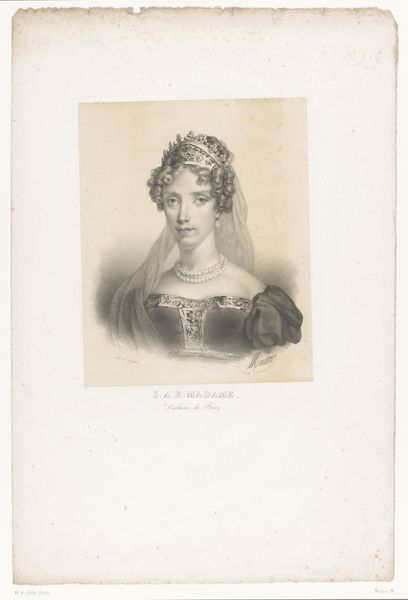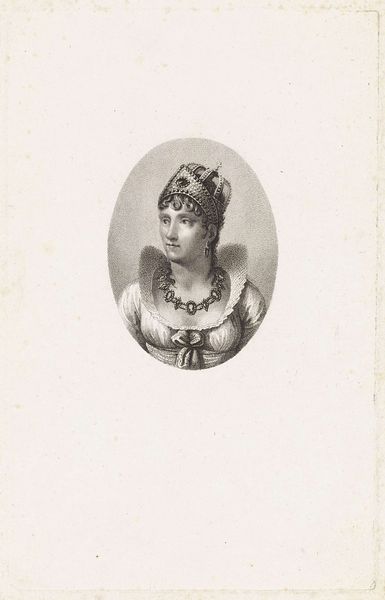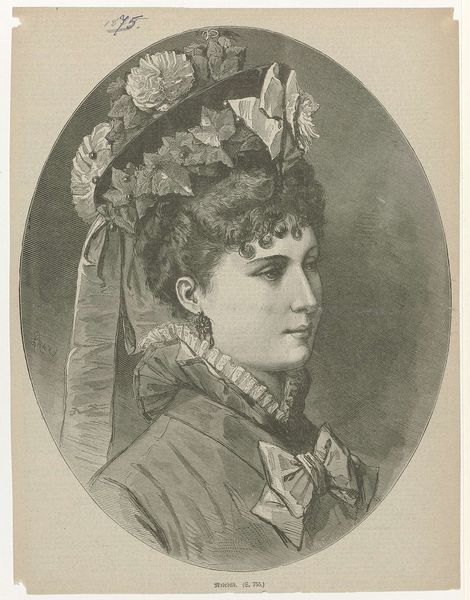
Fotoreproductie van (vermoedelijk) een prent van keizerin Marie Louise van Oostenrijk, echtgenote van keizer Napoleon I Bonaparte c. 1863 - 1880
0:00
0:00
Dimensions: height 87 mm, width 53 mm, height 105 mm, width 63 mm
Copyright: Rijks Museum: Open Domain
Editor: Here we have a reproduction of a print, likely a lithograph, depicting Marie Louise of Austria, Napoleon Bonaparte's second wife, created sometime between 1863 and 1880 by Étienne Neurdein. There's something delicate, almost ethereal about it... What catches your eye in this work? Curator: Intriguing question. The oval frame immediately dictates a specific visual field, drawing attention to the internal relationships of line, light, and texture. Note the artist's choice to render the figure in profile. How does that impact our reading of the portrait? Editor: It makes me feel like I'm observing a statue, lending a distant formality... less intimate than a frontal view. Curator: Precisely. Now, observe the subtle tonal gradations achieved within the lithographic medium. How do these varying shades contribute to the overall composition? Editor: They seem to create a soft, almost dreamlike quality, blurring the lines between reality and idealized representation, but doesn't that make it difficult to isolate details? Curator: The lack of sharp delineation forces the eye to appreciate the larger structure. Consider also the repetition of circular motifs, from the frame itself to the pearls and floral arrangements. Do these elements establish any discernible visual rhythm? Editor: Now that you mention it, I do see a rhythm! It makes the eye travel across the piece. This analysis shows how integral each formal choice is to create a unifying structure. Curator: Exactly! We see that in isolation, each technical detail informs a wider compositional function and creates visual harmony, even without overt drama. Editor: This exercise definitely gives me a different appreciation for what can be gleaned through careful examination of a work of art. Curator: Agreed. By engaging with an artwork’s internal formal elements, we enrich and enliven our understanding of its overall effect.
Comments
No comments
Be the first to comment and join the conversation on the ultimate creative platform.
